Ten graphic novels for the starting superhero reader
This entry marks the 100th post to this blog, and as a result, I thought I’d do something a little special. Most of you who read this are already dedicated comic book readers, but I do get a fair bit of traffic from random google searches and blog browsing services. Some of these readers may be getting into comics for the first time, or returning after a long hiatus. And so, I thought I’d run down my personal choices for the top ten collections to introduce a person to superheroes.
As always, my lists are arbitrary, based on nothing more than my own personal likes and dislikes. And also, as always, I feel the need to explain a bit about my criteria. To begin with, these aren’t necessarily my ten favorite graphic novels – just the ones I think provide the best introduction to superhero comics. I also limited myself to superheroes (or darn close to them in some cases). There is some amazing stuff going on in comics that has nothing to do with superheroes, including my all-time favorite graphic novel, Maus, but that’s outside the realm of this blog. This list also isn’t meant to be in order of importance – most of these are equally excellent as each other, and I honestly don’t know that I could rank one above the other. Therefore, I listed them alphabetically.
 Ultimate Spider-Man, Vol. 1 (Brian Michael Bendis)
Ultimate Spider-Man, Vol. 1 (Brian Michael Bendis)
By the early years of this millennium, Spider-Man’s life and continuity had become, frankly, a mess. Somewhere between Carnage and clones, I swore off Spider-Man comics. The continuity was ugly, and I felt like I no longer knew these characters.
As always, my lists are arbitrary, based on nothing more than my own personal likes and dislikes. And also, as always, I feel the need to explain a bit about my criteria. To begin with, these aren’t necessarily my ten favorite graphic novels – just the ones I think provide the best introduction to superhero comics. I also limited myself to superheroes (or darn close to them in some cases). There is some amazing stuff going on in comics that has nothing to do with superheroes, including my all-time favorite graphic novel, Maus, but that’s outside the realm of this blog. This list also isn’t meant to be in order of importance – most of these are equally excellent as each other, and I honestly don’t know that I could rank one above the other. Therefore, I listed them alphabetically.
Busiek created something remarkable with Astro City – a comic world that feels like it has the same depth and richness of the DCU or Marvel Universe, with characters that seem familiar even as we meet them for the first time. Just as remarkably, the characters he created are evocative of characters we remember from other publishers and fifty years of comic history, but remain unique and interesting in their own right. Samaritan reminds of Superman without ripping him off. Winged Victory bears a striking similarity to Wonder Woman, but has her own fascinating story, and the same can be said of Jack-In-The-Box, Crackerjack, The Confessor, the Silver Agent and others.
What makes Astro City even better is the fact that it doesn’t have the same focus that we see in most superhero comics. Astro City, as often as not, is about the normal people who inhabit the same world as the heroes. And when it is about the heroes, it isn’t about their heroic exploits, so much as it is about their daily lives. Life in the Big City starts off with the best Superman story that isn’t about Superman ever written, as we see what a typical day is like for the World’s Greatest Hero.
Many people have projected the superheroes of the late twentieth century into their near future, imagining what life would be for the superheroes of yore in a new generation, but none have done it as well as Frank Miller did with The Dark Knight Returns.
The transformation of Bruce Wayne into a recluse, and then back into Batman remains gripping, engaging, and visually brilliant. Miller gives us a dark vision of the future, and one that is firmly mired in the politics of the late 1980’s, but that doesn’t take away from the power of this story.
Without The Dark Knight Returns, it’s difficult to imagine Batman Beyond or Kingdom Come ever having been written. The power of this story can even be seen in how elements from this story have worked themselves into modern continuity – Green Arrow’s sacrifice (or not) of his arm, and Luthor as world leader. This comic really marked the beginning of the transformation of Batman from being one of many vigilante detective/martial artists into the driven, darker persona we are all now familiar with.
Not content to just write the end of the Batman story, Frank Miller went ahead and re-wrote the beginning of it too with Batman: Year One.
Wisely, this comic focuses as much on Detective Jim Gordon as it does on Bruce Wayne. As a reader, we can be thrilled with the exploits of the superhuman, but we can’t ever really understand them. What we can understand are the reactions of the ordinary humans around them.
Additionally, Year One is one of the most beautiful comics ever put together. Year One’s impact can be seen elsewhere in the recent Batman Begins, where Gary Oldman portrayed not Commissioner Gordon, but instead Detective Gordon.
The first major twelve-part mini-series that crossed into all aspects of that universe’s comics, the first Secret Wars comic is such a perfect slice of comics in the eighties that it can’t be ignored.
Featuring the best, and most well known heroes and villains of Marvel at the time, it was the first time we got to see Captain America and the Avengers fighting alongside Spider-Man and the Fantastic Four and the X-Men. And they were fighting against the best in Marvel’s supervillains as well (with a few notable exceptions, such as the Red Skull).
Secret Wars reverberated throughout all of Marvel, and its aftershocks are still felt today. Remember that it was in Secret Wars that the alien costume that would eventually become Venom was introduced. It spawned a (far less interesting) sequel, and when Marvel was looking for a mini-series to introduce opposite Infinite Crisis, they even used the Secret War name again.
Beyond all of this, it’s also just a good fun read – and the kind of comic we rarely see anymore.
Jack Knight was exactly what I wanted from my 90’s superheroes. At least, of the ones who identified themselves as such. You know, the whole “we’re not going to wear tights, because that’s ridiculous” movement.
The reason he stood head and shoulders above the rest is that he was unquestioningly a superhero (to the reader at least, he questioned it himself a lot). Sins of the Father did something that we almost never see in a comic – it killed Starman in the first issue of his comic.
Sins of the Father was a great example of how to tell a “darker” storyline without going into the “grim n’ gritty” movement, where sometimes it’s hard to tell who we’re supposed to consider the hero. And it spawned a great series that only got better as it went on. I regret the fact that Jack retired as Starman, and passed his cosmic rod onto Stargirl, but as a father myself, I understand and applaud his choice. You'll want to read the whole thing, once you get through this volume.
Before Crisis on Infinite Earths, Superman had become truly ludicrous in power. He could fly nearly at the speed of light, was able to push planets around with his bare hands, and nothing that wasn’t magical or made of kryptonite could so much as scratch him.
The list of his secondary powers went on and on – not just heat vision, x-ray vision, microscopic hearing, ultrasonic hearing and super-breath, but also super-mesmerism and whatever other odd power the authors felt he needed. (The cellophane “S” from Superman II is almost understandable in this context.)
In the aftermath of Crisis, the editors at DC wisely decided to tone Superman down a bit, and they gave that job to John Byrne.
The Man of Steel isn’t the most elegant comic ever written, it has a lot of re-introductions to take care of. But it does so in a fairly admirable and entertaining way. And a lot of what we now think of as “cannon” for Superman and company originates in these pages. Byrne gave us Lois, the daughter of an army general and a very competent investigative reporter. He gave us Lex Luthor as a wealthy industrialist – both of which have been incorporated into every incarnation of Superman created since; the animated series, Smallville, Lois and Clark, and Superman Returns. The Man of Steel redefined Superman for a generation, and therefore is really a must read.
I mentioned this is my Top Ten Superman Pastiches list, but it merits being mentioned again. Supreme: The Story of the Year is a loving deconstruction of the Superman mythos – complete with touching on how heroes get re-invented every generation, and all the trappings of the Silver Age.
But Moore doesn’t do this as a scathing commentary on the era, nor does he do it to make fun of the characters or genre. While I think that Astro City Vol. 1, Issue 1 is the best single issue of a Superman comic that isn’t actually about Superman, I think that this is my favorite Superman graphic novel without actually being about Superman.
It also does the best job of explaining why comic continuity can be such a mess to the novice reader that I’ve ever seen. On top of that, it’s illustrated wonderfully – very evocative of the style of Marvel and DC in the 1980’s, but on the higher quality paper and coloring techniques of the modern era.
Jean Grey’s tragic tale is as big a part of comic book history, and as important of a single event as the shooting of Bruce Wayne’s parents, or the rocketing of baby Kal-El to Earth, or the bite of a spider on Peter Parker’s young hand. It has become, unfortunately, muddled with ret-con after ret-con, new incarnations of the Phoenix-force, and the three thousand, four hundred and eighty-three resurrections of Jean Grey.
But that doesn’t change the fact that the original tale is about as good of a story as you’ll find anywhere. The battle in the Hellfire Club is a great warm-up battle for the X-Men (and one that would have future impact on the X-Men, especially Wolverine), and the battle on the dark side of the moon against the Shi’ar Imperial Guard is a superpowered slugfest that has rarely been matched.
Just as significant, this story was the one that really cemented the strength of the bond between Jean Grey and Scott Summers – the best romance in comics in my opinion.
Ultimately, I wish that they had left Jean dead at the end of the Phoenix Saga. Her rebirth, again, opened the floodgates wide for superheroes returning from the grave. The great truisms of superhero death, Bucky and Captain Mar-Vel, have even now been violated. Fortunately, you can read this comic without worrying about the future resurrection after resurrection.
 Ultimate Spider-Man, Vol. 1 (Brian Michael Bendis)
Ultimate Spider-Man, Vol. 1 (Brian Michael Bendis)By the early years of this millennium, Spider-Man’s life and continuity had become, frankly, a mess. Somewhere between Carnage and clones, I swore off Spider-Man comics. The continuity was ugly, and I felt like I no longer knew these characters.
I still occasionally saw Spidey in other titles I picked up, and vaguely missed him, but he was out of my life. I had been abused one-too-many times, and it was time for me to move on. But then Marvel created Ultimate Spider-Man. Written by a (then) up-and-coming writer by the name of Brian Michael Bendis, Ultimate Spider-Man featured a sixteen-year old Peter Parker in the modern era, facing re-imaginations of Spider-Man’s classic foes. The Green Goblin no longer relied on gadgets – Norman Osborn transformed into a giant green creature capable of throwing fire from his hands. The early romances of Peter Parker’s life were largely ignored in favor of immediately focusing on MJ. And Nick Fury looked like Samuel L. Jackson instead of Clint Eastwood
“A publicity stunt,” people said. “It’ll never last.” “It won’t be any good.”
Were they ever wrong. The rest of the Ultimate continuity has gotten a little messy, and I can’t say I fully approve of all the changes they’ve made, but Ultimate Spider-Man has remained one of the best comics on the market. Even my favorite titles tend to have ups and downs, but there hasn’t been a single issue of USM that I haven’t enjoyed reading.
No list of great comic book graphic novels would be complete without including Watchmen. Alan Moore’s masterpiece has been analyzed more than any other comic collection, and sparked more debate and discussion as well.
Superhero comics changed forever after the publication of Watchmen, as people began looking at their heroes as beings who had feets of clay. Finding true heroism in Watchmen takes a lot of digging, and for the most part, the heroes fail. But they make the world a better place – at a price.
It was also the first time we saw our heroes behaving in ways that were really ugly. The Comedian rapes the Silk Spectre, Rorshach is a certifiable sociopath, and Nite-Owl has let himself go and now has a beer-gut.
Oddly enough, I don’t really like Watchmen. I consider it important to comics, and well-written, but I blame it for much of what I now find unpleasant in superhero comics. Still, if you’re going to read modern comics, then Watchmen is an important thing to read. The trends in modern comics originate here.
That's my list, and I hope you enjoyed it. So, what do you think I missed? (Other than Crisis on Infinite Earths). Let me know, and thanks for sticking with me through the last hundred posts. Here's looking to another hundred!
Labels: Astro City, Batman, Spider-Man, Superman, Watchmen

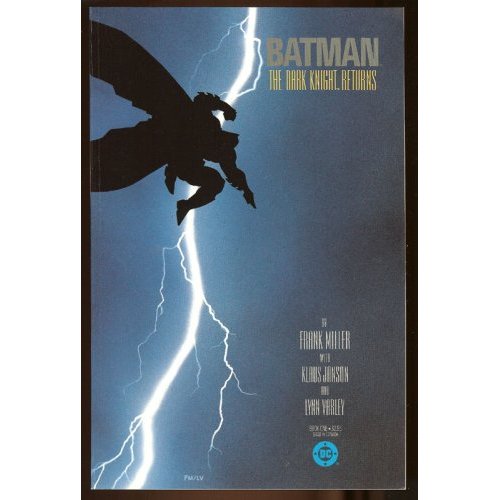


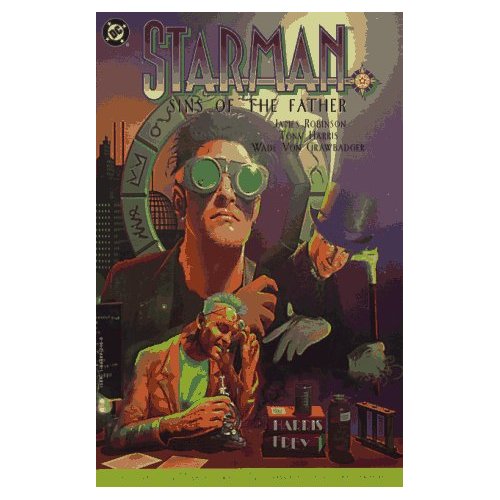
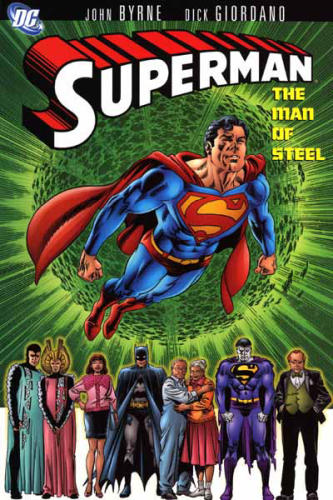

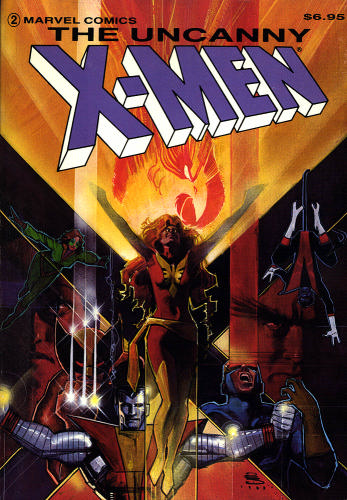
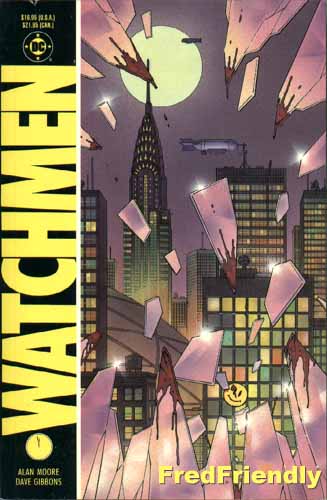


7 Comments:
You know, just looking at the Dark Phoenix cover makes me want to pull my copy out and read it again. It's been so long since I liked the X-Men it's easy for me to forget what a huge fan I used to be.
I even know where my copy is. I know what I'm pulling out tonight.
I think I would switch out "Man of Steel" for either "Birthright" or "Secret Identity." Both are fantastically written and give a good look at Superman, with "Birthright" being the new continuity for Clark's introduction.
Of course, there's always the problem of DC's world continuity. Jumping in at any point with them is difficult at best, and trying to add anything from the mess that is Crisis just bloats your whole list to crazy proportions (even if you don't include "52").
Brandon,
That's why I ignored it. I recommended Crisis to you as "homework", but you were already hooked. You were going to keep reading comics - no question. But for someone saying "Hey, tell me why I should read superhero comics," it would be a disaster.
I've never read Secret Identity, but I really didn't care for Birthright. It may be the current version of his history, and that's cool, but I didn't find it a good read. And Man of Steel is still where the concept of the characters as we still know them today was introduced.
Brandon, I gotta disagree with you on Secret Identity. I liked it, but I wouldn't say it's one of the Superman titles that I would instantly think of to recommend to a comic book fan and certainly is not one of those must read titles like the Dark Knight Returns.
Birthright is decent, more recommended for the Smallville fan than anything else. It's good, but I don't think its reputation will diminish as time wears on while most of the ones on the list will still be must reads.
We're gonna have to agree to disagree on Secret Identity then. In my opinion, that is the finest Superman title ever written about Big Red that actually uses the name "Superman" in it (even if it's not the traditional Kryptonian). Honestly, I can't think of a true Superman title that I would think is absolutely necessary for the neophyte comic reader. Everyone is familiar enough with his mythos, and from what I've seen, little of it is must-read material anyway. As sad as it may seem, the only thing a new reader might need to read more than an origin story is the death story, considering its impact to this day on the character and the world (or, at least, the unending references to it). Heck, the only Superman title I own are "Secret Identity," "Birthright," and "Lex Luthor: Man of Steel" (and come to think of it, that might also be a good one to put in this place on the list). Quite frankly, I just find Superman for the most part boring in the comics (and it's not the character's fault, because I love "Smallville" and "Superman Returns" and even the first two movies have their own charm for me). I'm hearing good things about OYL, but from what I've seen while loitering at the bookstore, I've been fairly unimpressed with mainstream offerings of the character outside of team titles.
As for "Birthright," comics are inevitably a product of their time. Retconning means the need to stay up-to-date to some degree. So, if you're gonna include something mainly because of its treatment of the origin of a character (and/or his/her extras), I would be inclined to use the one that is the currently accepted origin. Plus, it's relation to Smallville makes it that much better of a choice, since many new readers would be coming in with a knowledge (or at least a familiarity) of that show.
But all of this is ultimately moot, because we all know what really needs to go in this place: "The Dark Knight Strikes Again." After all, it's one of DC's "30 Essential Graphic Novels": http://www.dccomics.com/sites/essential30/
Wow, I just realized we missed a biggie: Kingdom Come.
I am one of those random google searchers looking for a starting point in graphics novels and i appreciate this blog post. thanks. i just finished (literally just finished today) Watchmen and i was blown away. i'm a english major and i am looking for graphic novels with a lot of depth, i think the two batman novels mentioned in this post are my plan of attack. if any of you can recommend some novels with, i don't know, gut wrenchingly brilliant and/or tragic storylines and complex characters email me at kaycebasques@gmail.com THANKS
Post a Comment
<< Home